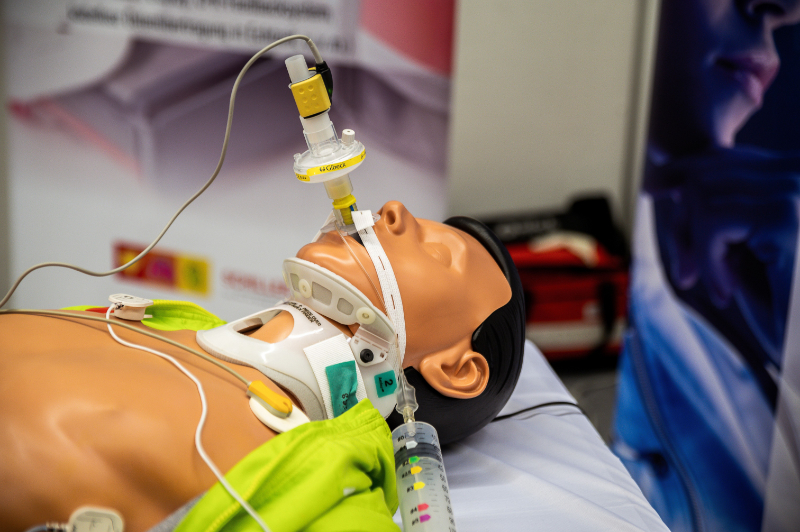Reporting an incident, whether a near-miss or adverse event, is an essential component of improving quality care and patient outcomes. By reporting a medical error, healthcare organizations can investigate its possible root cause(s), which can lead to future error prevention. Investigating past medical errors can lead to organizational policy and procedure changes and improved quality of care (Sergi & Davis, 2023).
Many healthcare organizations have established incident reporting systems, which help detect, track, and manage patient safety events. An incident reporting system is an avenue where a healthcare professional can voluntarily report a patient safety event, whether near-miss or harmful. An effective and robust incident reporting system must have essential components, including reporting to the proper channels and within a timely manner, as well as a plan for reviewing reporting and next steps. Also, the majority of these systems ensure confidentiality with the identity of the incident reporter known (Patient Safety Network, 2019).
Data and information collected from incident reports may vary per healthcare organization but typically includes (Patient Safety Network, 2019):
- Patient or individual affected
- Date and time of incident
- Location of the incident
- Report of the incident (usually free text)
- Witnesses of the event (if any)
- Response to the incident or event
- Condition of the person affected (including if any known injury or harm occurred)
Again, information collected varies per organization; some may ask for medical record numbers, treatments administered (if any), pictures, and other information. The information in these reports should be factual and objective. Examples of instances where an incident report may be submitted are:
- Patient fall
- Medical device or equipment malfunction
- Patient complaint with the care they received
- Medication administration errors
- Medication reactions
Some laws and regulations at the state level require that healthcare organizations submit their incident reporting information. Many healthcare safety organizations and medical equipment companies collect information from incident reports, although the information submitted is often voluntary. For example, the Joint Commission accredits many healthcare systems, and a requirement of accreditation is mandatory incident reporting of sentinel events. It also requires that a root cause analysis be performed within 45 days of the event (The Joint Commission, 2024a).
Many healthcare organizations use the root cause analysis method to investigate and determine the underlying cause of the adverse or sentinel event. The method helps identify possible training, operational, and resource deficiencies that led to the near-miss or adverse event (Singh et al., 2024). Interestingly, many organizations use the Swiss Cheese Model to guide their root cause analysis since it identifies gaps or failures that led to the event or patient harm (Wiegmann et al., 2022). If submitted, some of the information in a root cause analysis is taken from the incident report.
Each health organization has a specific interprofessional team assigned to perform a root cause analysis on a reported event. Often, team members include individuals from risk management, quality improvement, clinical governance, clinical managers, key stakeholders, and other healthcare professionals. During a root cause analysis, the investigation attempts to discover any underlying deficiencies that caused the event. A root cause analysis often focuses on organizational or system-wide deficiencies and processes instead of the individual level. Interestingly, for organizations accredited by the Joint Commission, this organization provides a framework for healthcare systems to use when performing a root cause analysis. The framework poses questions to consider and investigates areas like communication, system processes, environmental factors, staffing, etc. After a root cause analysis, an action plan to resolve or correct the identified underlying deficiencies is discussed and performed (Singh et al., 2024).
Unfortunately, there are instances where medical errors are not reported, especially in near-miss situations where a patient was not harmed. Several studies have been conducted to uncover some barriers to why medical errors are unreported. One study by Aljabari and Kadhim (2021) systematically reviewed 30 studies reporting barriers to medical errors by nurses, physicians, and other healthcare providers from 2000 to 2020. This study found that the most reported barrier (63%) to medical errors was fear of consequences, followed by a lack of feedback at 27% and work culture at 27% (Aljabari & Kadhim, 2021). Other studies have found that fear, lack of employee support, and staff training are potential barriers. Thus, it’s vital for healthcare team members to feel supported and have a positive workplace culture that avoids blaming staff but instead facilitates preventative measures, reporting, and further education (Asgarian et al., 2021).












